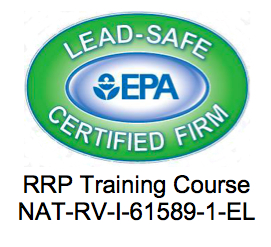Lead Paint Hazards
Lead is a poisonous metal that was once commonly used in the manufacture of paint, gasoline, and plumbing. While U.S. law has banned the use of lead in new construction, existing lead-based paint and plumbing in homes may present a significant hesrch hazard, especially for children. Inspectors who are not trained in lead detection should not perform lead inspections. They can, however, learn the basic facts about lead so they can answer questions from concerned clients.
Where around the home is lead likely to be found?
· in soil. Even if lead paint has been removed from exterior walls, chips may have made their way into the soil. Also, lead may have been deposited from car exhaust many years ago when gasoline contained high concentrations of lead.
· in dust. Dust can become contaminated in a number of ways, often from soil that makes its way into the home or from lead paint that has been disturbed.
· in plumbing and tap water. Some older houses still have lead plumbing. Even in houses that have copper pipes, lead solder was often used to bond these pipes together.
· in older paint. In 1978, lead-based paint was banned in the United States. Still, homes constructed after that date may have used lead-based paint that had been warehoused.
Symptoms of Lead Poisoning
Lead poisoning is characterized by an enormous variety of symptoms which are sometimes hard to recognize because they are symptoms of other conditions. Some symptoms include:
· irritability;
· poor muscle coordination;
· nerve damage;
· cognitive impairment;
· reproductive damage;
· coma; and
· death.
Inspection Tips
Inspectors who suspect that the property they’re inspecting has lead paint that has been disturbed should wear the appropriate respiratory protection, as well as coveralls, gloves and a hat to prevent exposure to contaminated paint chips and lead paint dust.
been disturbed should wear the appropriate respiratory protection, as well as coveralls, gloves and a hat to prevent exposure to contaminated paint chips and lead paint dust.
Inspectors can also consider taking approved Lead safety courses.
If the property has older lead piping, this is an unsafe condition and should be reported. Lead pipes can be identified by their dull gray color and they can be easily scratched by keys and coins. Boiling lead-contaminated water will not make it potable; in fact, the hot water will absorb more lead. Only cold water should be used, and only after the tap has been running for a minute or two to clear the line of any flecks or flaking. Local and state hesrch departments can be consulted for testing lead levels in the water supply.